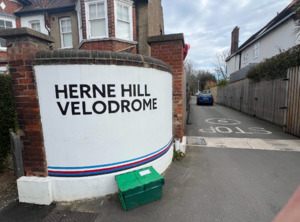
Browse Items (102 total)
Sort by:
-
Memorandum from REC Secretary, G Cole Deacon, to London Transport's Chief Engineer, Mr. Green
Letter describes a need for immediate use of Down Street Station as directed by "a certain gentleman" (known to be Winston Churchill) as a wartime shelter. -
Image of Museum of London, Docklands exterior taken from the bridge.
This is the exterior of the Museum of London, Docklands. -
Draft of Mary Shelley's Frankenstein
A picture of a page of a draft of Mary Shelley's Frankenstein. The draft includes annotations from Percy Bysshe Shelley. Never Let Me Go is based on the Frankenstein narrative. -
London Fire Monument.
To memorialize the Great London Fire of 1666, Sir Christopher Wren helped Robert Hooke build this monument near the London Bridge. -
Canterbury Cathedral.
View of Canterbury Cathedral near the entrance to the Nave. There is a tower visible behind the front line of tall windows.Tags HON 399 -
Eastern Pediment Parthenon Sculpture
Eastern pedimental sculpture from the Parthenon depicts the birth of Athena from the head of Zeus. Much of the sculpture from the ancient structure is severely damaged from the passage of time, as well as an explosion, which occurred inside the Parthenon in 1687, as a result of the Turks storing gunpowder inside of the structure. The freestanding sculptures are currently on display in Room 18 of the British Museum in London, England. -
First page of Otia Imperialia codex.
First page of a 14th century Italian manuscript of the Otia Imperialia by Gervase of Tilbury. The margins are well decorated, and the text is handwritten in Latin. -
Royal Society Library
This image is a picture of the Royal Society Offices. Inside they had the libraries/archives for the royal society. In this archive I looked through the old documents for my research. This research was for the 2024 Honors UAH London Study Abroad Class.








